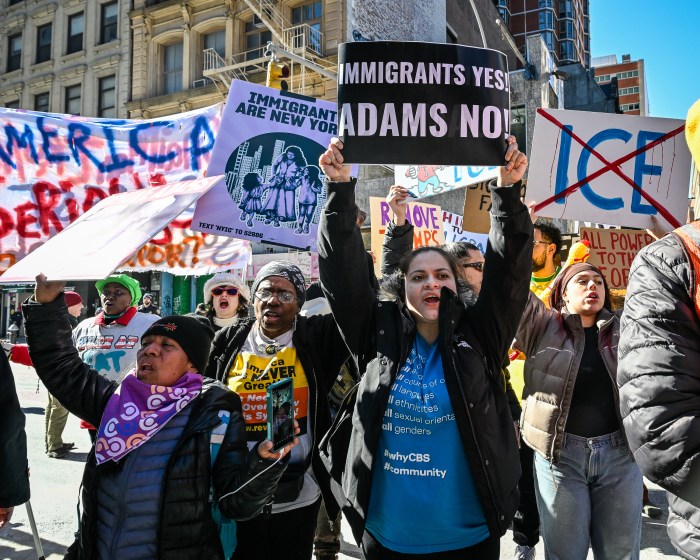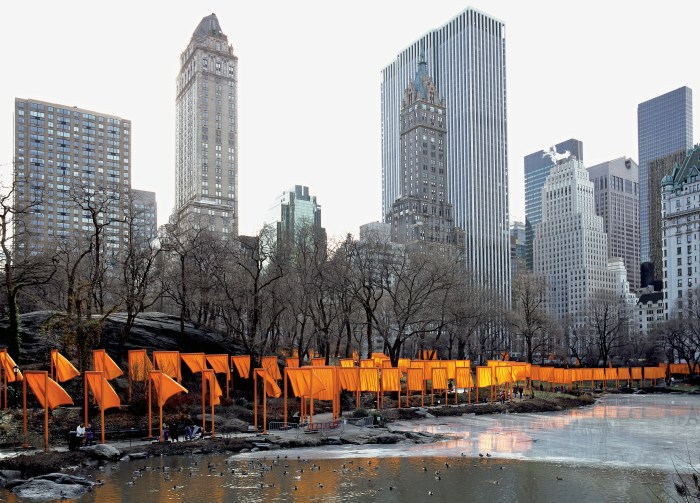
The NYPD is moving its neighborhood policing model underground and testing the program in two different transit districts, officials said on Thursday, but experts wonder if the program will be as effective on subways as officials say it is in communities.
The Neighborhood Coordination Officers program, which the NYPD first started rolling out in 2015, is aimed at giving officers more discretion and allowing people to become more familiar with officers in their area. The pilot will roll out in Transit District 30, which covers a large swath of Brooklyn, and Transit District 12, which covers several stations along the 2, 5 and 6 trains in the Bronx.
“It just gets you that familiarity with a cop,” said the NYPD’s Chief of Department Terence Monahan, speaking at the Atlantic Avenue-Barclays Center station. “It’s that commuter who gets on at that same station every single day … starting to see the same faces. And when there’s an issue, there’s someone you could reach out to. You have your cop to reach out to.”
While police officials have long touted the ability for officers to use discretion as a cornerstone of neighborhood policing, advocates have criticized the department’s treatment of issues like fare evasion, arguing that it tends to target poorer, African-American communities. A report last year by the Community Service Society of New York found that across Brooklyn’s 157 subway stations, 66 percent of those arrested for turnstile jumping in 2016 were black and 87 percent were men.
A total of 11,265 people have been arrested for jumping the turnstile so far this year through April 8, and another 2,687 have been issued a summons for the offense. That’s down nearly 44 percent from the same time period last year for arrests and 55.8 percent for summonses (when 17,046 people were arrested for fare evasion and 6,073 were issued a summons) according to the NYPD’s data.
“People have to pay to get on the subways. We don’t want people getting on for free, it’s a quality-of-life issue,” Monahan said. “Neighborhood policing is allowing our officers to be innovative, use their initiative and use their discretion to keep people safe.”
David Jones, the president and CEO of the Community Service Society who serves as one of Mayor Bill de Blasio’s appointees to the MTA’s board, was hopeful that the effort would bring about better police-community relations because he is generally in favor of community policing. But he said he’d have to wait and see how the initiative plays out due to what he describes as the Transit Bureau’s history of overly aggressive, broken-windows policing of turnstile jumping.
“Most of the work transit police are doing now is basically stopping fare evaders in poor communities and 90 percent of those fare evaders are people of color,” Jones said. “If this just exacerbates that, I’d be very concerned. If it’s real community policing that focuses on violent crime and protecting women and others from assault — I’ll be there cheering. I hope this is a step in the right direction but, because of the bureau’s history, we have to be somewhat vigilant.”
Robert Gangi, the director of the Police Reform Organizing Project, who was a long-shot mayoral challenger of de Blasio’s in 2017, said he didn’t believe the effort would yield tangible results. He said riders have had to deal with police — occasionally ticketed or even arrested — for nonviolent Transit Bureau violations, like having feet up on subway seats or traveling between train cars.
“If what the mayor is after is to make more services and different kinds of help available to New Yorkers who ride the subways, then we should have more social workers in the subways,” Gangi said, “because they’re more trained for and more talented at providing support services for people.”
Each transit district will have six NCO officers, each pair assigned to one of the three sectors in their district. And they will ride the trains within that sector. Transit Chief Edward Delatorre said there will also be four officers who patrol the sectors each shift to support the NCO’s.
The officers will also be trained by the city’s homeless outreach experts.
“The fact that there’s going to be the same officers seeing the situation day in and day out … they’re also going to be able to help those outreach workers to know how to approach someone,” de Blasio said. “Remember, the goal is win the trust, get the person in off the street, keep them off the street.”
Joseph Giacalone, a retired NYPD detective sergeant and adjunct professor at John Jay College of Criminal Justice, said he doesn’t see transit’s NCO program working the same as it has in precincts. But Giacalone, who thinks the neighborhood policing model is working, added riders may feel safer seeing the uniformed presence in the subways.
“I don’t see it working the same way as an intelligence gathering tool. The community is, for lack of a better word, transient on the subway. People don’t live there,” he said. “It frees up the transit cops to do what they do. Focus on the little issues so the transit cops can work riding the trains to prevent people from getting assaulted and people getting their phones stolen and the like.”
De Blasio, however, said he thinks the “very local focus” that worked in precincts will work in transit as well.
“If you see the same officer 10 times and you have something you’re concerned about, I think you know New Yorkers are not going to be shy about it,” he said. “At first it sounds so far out of the box you might wonder, will it work? What I have seen happen is — the whole neighborhood policing notion — when people get familiar with each other … it just starts a natural dialogue.”
The NYPD will also put up posters with the photos of that sector’s officers and an email address to contact them.
Citywide, there are currently 63 precincts and nine housing districts participating in the NCO program. Police said all 12 transit districts are expected to have the program by the beginning of next year.




































